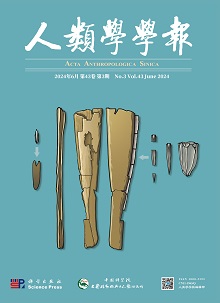The southern dispersal route of early modern humans has become a highly discussed topic internationally, primarily because it aids our understanding of modern humans’ migration and adaptations in the southern part of Eurasia, Island Southeast Asia and Oceania. This paper aims to review various aspects of this dispersal, including its timing, possible routes, and current debates.
Presently, increasing evidence indicates that early modern humans equipped with Middle Paleolithic technologies migrated out of Africa and arrived in the Arabia peninsular and South Asia during MIS 5 stage, and they may also have reached Australia by at least 65 ka. Paleoenvironmental and GIS-based analyses indicate that both coastal and inland routes were likely taken during the dispersal, and current dispersal debates are concerned with establishing the range of its geographic expansion, in addition to assessing how influential it was in facilitating the occupation of early modern humans in different regions.
After ca. 50 ka, early modern humans on the Southern Dispersal Route begin to show similar behavioral characteristics with contemporaneous modern humans in Africa and in the northern part of Eurasia, such as the use of ochres, personal ornamentation, and cave art. At the same time, these modern humans also developed regional adaptations independently, for instance, the exploitation of rainforest environments and marine resources, the production of water craft, amongst others. Regarding lithic technology, archaeological evidence in South Asia shows the appearance of advanced microlithic technology (microblade, backed tools and etc.) by 50-30 ka, whereas in Southeast Asia and the Oceania, lithic technology trends towards miniaturization, expediency, and an emphasis on micro-flake production. The application of use-wear and residue analyses also indicates that some micro-flakes were used to make organic tools or to form part of composite tools, implying the existence of complex technological behaviors.
South China is adjacent to Southeast Asia and the Indian Peninsular and therefore can be included in research on the Southern Dispersal Route, from both geographical and environmental perspectives. However, such a study has rarely been done in South China. To explore the emergence and evolution of early modern humans in South China, quantitative and inter-regional technological-based comparisons and analyses are needed on both the Middle Paleolithic assemblages and those micro-flake-based Late Paleolithic assemblages found in South China, along with robust use wear and residue studies.











